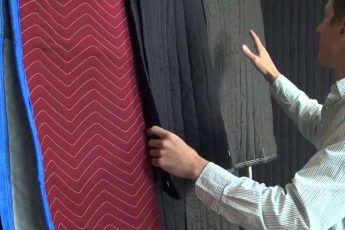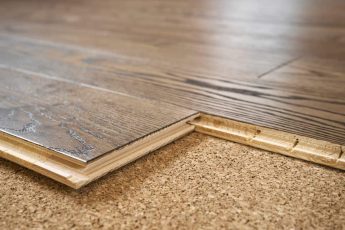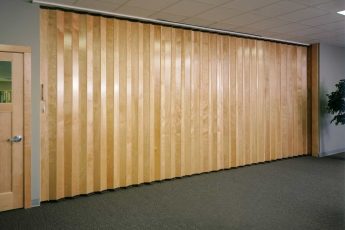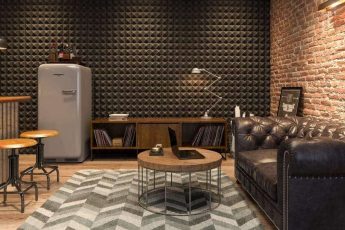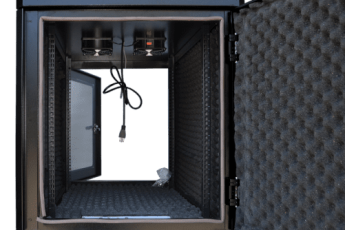When it comes to soundproofing a fence, you should consider the materials used. You can choose from mass-loaded vinyl, Coconut-based membranes, or rubber. You must ensure that the material is able to block the sound. Then, you need to secure it with screws. If there are gaps in the material, you can plug them with soil.
Mass-loaded vinyl
Mass-loaded vinyl is a great option for soundproofing your fence. There are several different types of MLV that can be used for this purpose. You can even use them for smaller projects, such as soundproofing washing machines and air compressors. Before you purchase MLV, you should first measure your fence’s length and width. This will determine how much MLV you will need.
You can install MLV by nailing or screwing it to your fence. Make sure to use the right size nails or screws to attach the vinyl to the fence. You may need more than one sheet to cover your entire fence. Make sure to secure each sheet by using a screw or nail gun to avoid gaps.
When installing your mass-loaded vinyl, be sure to adhere it firmly, but not too tightly. The material is prone to tearing, so it is better to install it a little looser to increase its soundproofing ability. You should also apply it on studs and machinery housings to help reduce noise transmission. Mass-loaded vinyl for soundproof fences is a good choice for both indoor and outdoor applications. However, the material should be properly applied during warm weather so that it can be fully effective.
Coconut
A soundproof fence can be constructed using coconut shells and mats. Coconut is a natural material with an excellent sound-absorbing effect. Coconut is an attractive choice for sound-proofing a fence as it looks very natural. However, coconut shells and mats are not cheap. If you are concerned about cost, you can use rubber mats. They are cheaper, but they may not look as nice. However, you can disguise them with plants.
Coconut mats are made of long, thick coconut fibres. These fibres absorb sound and are woven together with an insulating plate. They reduce noise by up to 30 decibels, a significant reduction in garden noise. The outer layers of coconut fibres also provide a strong surface for plants to adhere to, which further reduces sound transmission through the fence.
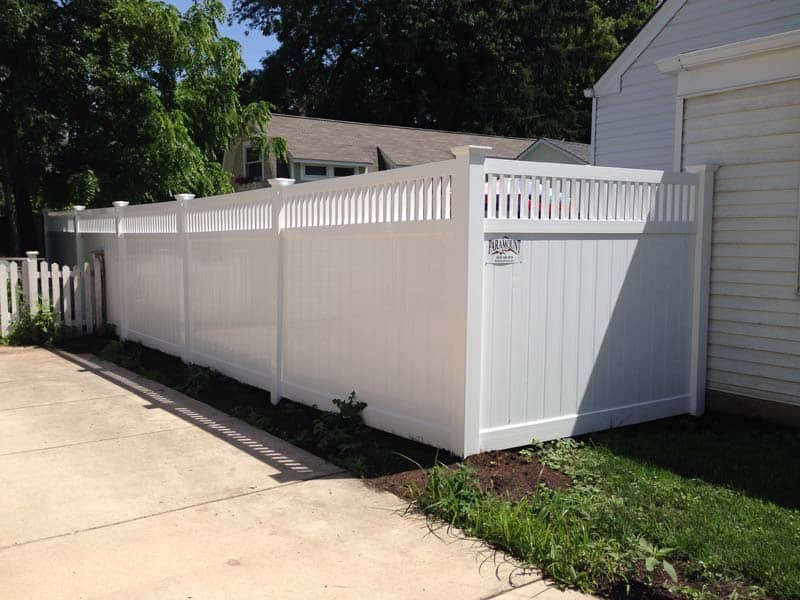
The height and placement of a soundproof fence can also affect how much noise it blocks. A heavy-weight fence can block more sound than a thin one.
Rubber
Rubber soundproof fences are designed to reduce noise levels in your yard. They are commonly used in smaller yards, where the noise level is low. They are more durable and effective than other materials. However, when considering a soundproof fence, consider the length of the barrier as well. A good rule of thumb is to use a fence that is 4 times longer than the distance between the source and receiver.
When choosing a soundproof fence, the location of your house is also an important factor. Houses situated on irregular ground or valleys will be in need of a soundproof fence. If the noise is coming from high above the house, try to find a smaller fence, as larger ones will be more difficult to place in the proper locations. Moreover, consider the noise level of the surrounding neighborhood when choosing a soundproof fence.
After selecting a soundproof fence, determine how you are going to install it. You may use a newly installed fence, or you may choose a wooden surface to work with. In either case, you should use the proper tools and materials. You should also make sure to measure the height and width of the fence and cut the mass-loaded vinyl accordingly. If necessary, leave some space between the fence’s posts to allow for adjustments.
Coconut-based membranes
If you want to make your soundproof fence more durable, you can use mass loaded vinyl. This type of material is made of several layers that overlap each other two or three inches. It is secured to the fence frame using Velcro on each side. Its thickness should be about one-half of the height of the fence.
The soundproofing effect of these materials depends on several factors. First, you need to make the fence high enough. You also need to use material that deflects sound waves. The density of the material must be higher than the noise level of the surrounding area. This will ensure that noise does not get into your garden. Second, soundproof materials can also convert heat into a form that does not cause any disturbance.
Lastly, you can also use acoustic noise barrier membrane. This type of membrane is usually available in rolls. Make sure to flatten the material before you install it to ensure a tighter fit. This will also help the material hang straight and reduce bunching. Most contractors brace the membrane with thin timber battens.

Second Skin Luxury Liner Pro
If you have a new wooden fence that is leaking sound, you can install a soundproof fence using a vinyl lining. Be sure to use the proper tools and follow proper installation procedures. Start by putting in the fence posts – start with the corner posts and work your way towards the middle.
Next, install a second skin liner to block the airborne noise from the road. This liner is a two part composite mat comprised of a vinyl barrier and open celled acoustical foam. It is specially designed to reject certain airborne sound waves, including road noise, engine noise, and exhaust noise. It is best installed on top of Second Skin Damplifier Pro to increase the level of soundproofing.
Besides using TMS mass loaded vinyl, Second Skin Luxury Liner Pro also uses cell foam and vinyl to absorb sound. These two materials work together to provide a high soundproof barrier, which will keep the noise out of your yard. To install a soundproof fence, first determine the height and width of the fence. After that, lay the sheet over the fence, making sure it is evenly distributed.
Brick or stoned wall fences
A brick or stoned wall soundproof fence is the most effective sound barrier for a property. These walls are heavy, which makes it difficult for sound to pass through. Moreover, these types of walls are also thick, so they make a more sturdy barrier than most other types of fences.
It is best to build a sound fence around your property, which will be at least two metres high. Anything taller requires planning permission. You can also include trellis or flowers on the fence to further reduce sound absorption. The more dense the barrier, the better. A wooden fence is too thin to effectively deflect sound. Rather, choose a sturdy brick or stoned wall that extends a few feet above ground level.
Brick and stoned wall soundproof fences are more expensive than other types of fences. Brick is naturally thick and dense, which makes it more difficult for sound waves to travel through it. However, these walls can be costly and can hinder view or light.
White noise machine
Soundproof fences are one of the best ways to protect your home and family from noise. Noisy neighboring properties are particularly annoying, as they cause increased stress levels and even health problems. You can also use a soundproofing device to reduce the noise from traffic. In addition, the noise from traffic can be mask by a fountain or small speakers.

The soundproofing effect of soundproof fences can vary greatly depending on the type of noise and the height of the fence. A tall fence can make a big difference if your property is situated on a hill. However, if your property is at the bottom of a valley or the base of a mountain, you may not need such a high fence. Wind can also be an opponent, so you should choose the height of the fence according to the location of the noise source.
Using a white noise machine can also help reduce the noise in an office environment. The noise from other people’s conversations can distract you from your work. By reducing background noise, you can focus on your work and produce better work faster.

